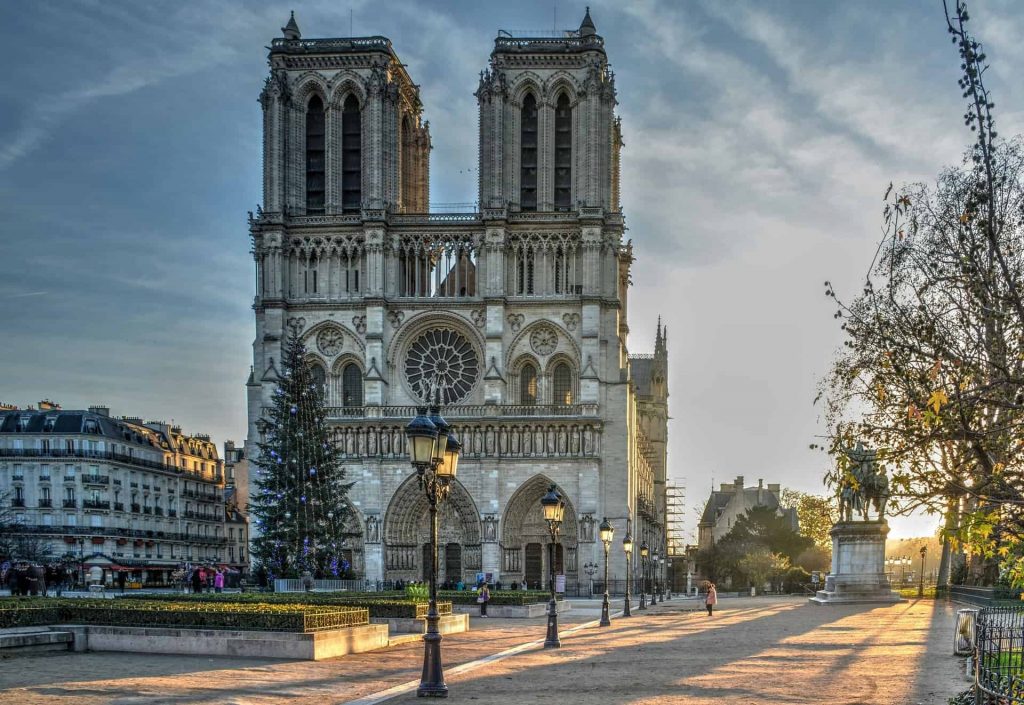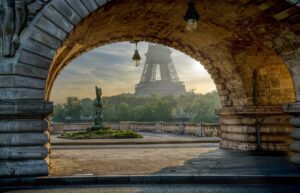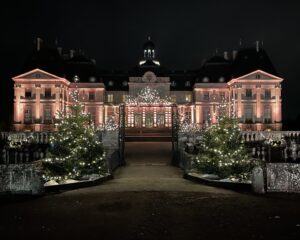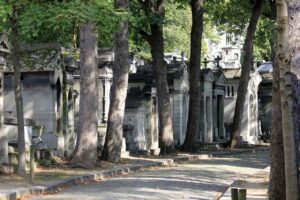I did not go to school to be a tour guide, nor did I grow up dreaming of living in France. So how did I wind up working as a tour guide in Paris? Fair question. It’s actually one that I get asked nearly every day at work, and while the full answer will likely become a book someday, the short answer is simple. Because of Notre Dame Cathedral.
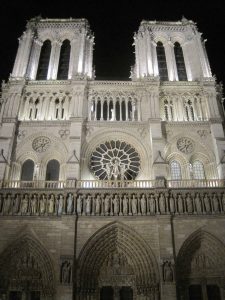 The first time I ever laid eyes on Notre Dame I was 14 years old and I instantly fell in love with the majestic building that stood before me. I grew up in a city where a 50 year old building is considered ancient, so to imagine the centuries that Notre Dame has witnessed was awe-inspiring. When I moved to Paris as an adult, I didn’t have much figured out, but there was one thing I knew for certain. I knew that I had to be a part of Notre Dame’s operations. I thought I could hand out programs at services or something else along those lines, but this beautiful building had other plans for me.
The first time I ever laid eyes on Notre Dame I was 14 years old and I instantly fell in love with the majestic building that stood before me. I grew up in a city where a 50 year old building is considered ancient, so to imagine the centuries that Notre Dame has witnessed was awe-inspiring. When I moved to Paris as an adult, I didn’t have much figured out, but there was one thing I knew for certain. I knew that I had to be a part of Notre Dame’s operations. I thought I could hand out programs at services or something else along those lines, but this beautiful building had other plans for me.
Because I was a native English speaker, I was sent to CASA, the organization that provides daily tours for visitors to Notre Dame. After a rigorous study session and a nerve wracking test tour, I was cleared to become one of their English speaking guides. All it took was guiding one tour to realize that this was the perfect job for me. Even though I now guide all over France, Notre Dame is still my favourite tour. It also happens to be the most visited landmark in the city, with over 13 million visitors every year, and I often wonder how many of these visitors take the time to learn about the history of this building. How many come to know her secrets? In particular, how many of those 13 million visitors know that they are standing inside a building that was saved by a book? They should. It’s a great story.
While Notre Dame began its life as one of the grandest buildings in Paris, by the early 1800s, the cathedral was a derelict shell of its former self. The French Revolution had taken a terrible toll on the cathedral, and not even the coronation of Napoleon Bonaparte as Emperor of France in 1804 was deemed a worthy enough occasion to warrant a restoration. City planners had marked Notre Dame for demolition, but fate was about to intervene in the form of the Romanticism movement that was sweeping across France.
 In 1831, famed French author Victor Hugo published Notre-Dame de Paris, or in English, The Hunchback of Notre-Dame, and the response was extraordinary. An instant sensation, The Hunchback of Notre-Dame painted the cathedral as a character unto itself alongside the deformed Quasimodo and the daring Esmeralda, and in doing so, it galvanized the people of Paris to save the building that was now the setting for their new favourite book. Calls for a restoration began in earnest, and in 1844, work was begun under the leadership of a young architect by the name of Eugène Emmanual Viollet-le-Duc. Viollet-le-Duc had made a name for himself as a master restorer of medieval buildings, and now he turned his attention to Notre Dame Cathedral. For 24 years, Viollet-le-Duc and his team worked to return Notre Dame to its former glory; replacing broken windows and smashed statues, and saving the magnificent south rose window from almost certain collapse. However, Viollet-le-Duc’s work went a bit farther than that.
In 1831, famed French author Victor Hugo published Notre-Dame de Paris, or in English, The Hunchback of Notre-Dame, and the response was extraordinary. An instant sensation, The Hunchback of Notre-Dame painted the cathedral as a character unto itself alongside the deformed Quasimodo and the daring Esmeralda, and in doing so, it galvanized the people of Paris to save the building that was now the setting for their new favourite book. Calls for a restoration began in earnest, and in 1844, work was begun under the leadership of a young architect by the name of Eugène Emmanual Viollet-le-Duc. Viollet-le-Duc had made a name for himself as a master restorer of medieval buildings, and now he turned his attention to Notre Dame Cathedral. For 24 years, Viollet-le-Duc and his team worked to return Notre Dame to its former glory; replacing broken windows and smashed statues, and saving the magnificent south rose window from almost certain collapse. However, Viollet-le-Duc’s work went a bit farther than that.
 While his official duty may have been to restore Notre Dame, historians today regard Viollet-le-Duc’s work as more interpretative, as he was known to restore buildings to an idealized version of their original design. This tendency can be seen throughout Notre Dame in the many modifications and changes Viollet-le-Duc made to both the interior and exterior of the building, some of which were intentional, while others were decidedly less so. One example of the unintentional is the south rose window that was completely rebuilt during the restoration. The three rose windows of Notre Dame are famous for containing some of the only remaining stained glass from the building’s original construction, but few people know the truth about the south window. When Viollet-le-Duc removed the window’s medallions in order to rebuild the window frame, he somehow forgot to write down where all of the medallions belonged, meaning that while this window does still contain its original stained glass, the medallions are now out of order. Not exactly the attention to detail most people would expect from a master restoration artist.
While his official duty may have been to restore Notre Dame, historians today regard Viollet-le-Duc’s work as more interpretative, as he was known to restore buildings to an idealized version of their original design. This tendency can be seen throughout Notre Dame in the many modifications and changes Viollet-le-Duc made to both the interior and exterior of the building, some of which were intentional, while others were decidedly less so. One example of the unintentional is the south rose window that was completely rebuilt during the restoration. The three rose windows of Notre Dame are famous for containing some of the only remaining stained glass from the building’s original construction, but few people know the truth about the south window. When Viollet-le-Duc removed the window’s medallions in order to rebuild the window frame, he somehow forgot to write down where all of the medallions belonged, meaning that while this window does still contain its original stained glass, the medallions are now out of order. Not exactly the attention to detail most people would expect from a master restoration artist.
Be that as it may, Notre Dame was most certainly saved by Viollet-le-Duc and his team, and much of what visitors see today is the work of his 24 year restoration, including many additions that were of his own design. For example, towering high above the cathedral, the great spire of Notre Dame stands as a testament to Viollet-le-Duc’s vision, as it is not a restoration, but rather a design that is entirely his own. A spire had been present as part of the original design of the cathedral, but it had long since succumbed to the wind and elements. Today, the spire that stands atop the building is where you will find Viollet-le-Duc’s most audacious contribution to Notre Dame.
Around the base of the spire are 12 green statues who represent the 12 apostles looking out into the world. Well, all except for one. At the top of the southeast corner there is an apostle who is looking back up at the spire, and if you look carefully, you will see that in his hands is not the Bible or some other religious artifact, but rather a ruler. On this ruler is the inscription, “Eugene Emmanual Viollet le Duc erected this arch (this arrow)”, and from this we learn the truth. This apostle is not Thomas, the patron saint of architects, but rather the image of Viollet-le-Duc himself, immortalized forever on the rooftop of the building he saved. A closer inspection will reveal that Viollet-le-Duc’s arm is raised above his head, but to what end? Is he contemplating his work? Or is he blinded by the beauty of what he has created? Perhaps only Viollet-le-Duc himself knows, but what is known for certain is that despite his sometimes creative and/or controversial modifications, Notre Dame owes a great deal to the man who now looks upon it for all eternity.
Telling the story of Viollet-le-Duc’s apostle is one of my favourite parts of my Notre Dame tour, but it is by far not the only incredible moment in this building’s history. I could spend hours talking about this beautiful building, and I often do, so the next time you’re in Paris, be sure to block off plenty of time to properly take in this incredible monument.
Notre Dame Cathedral offers daily tours in multiple different languages, so please check the schedule HERE to find the right time for you.

